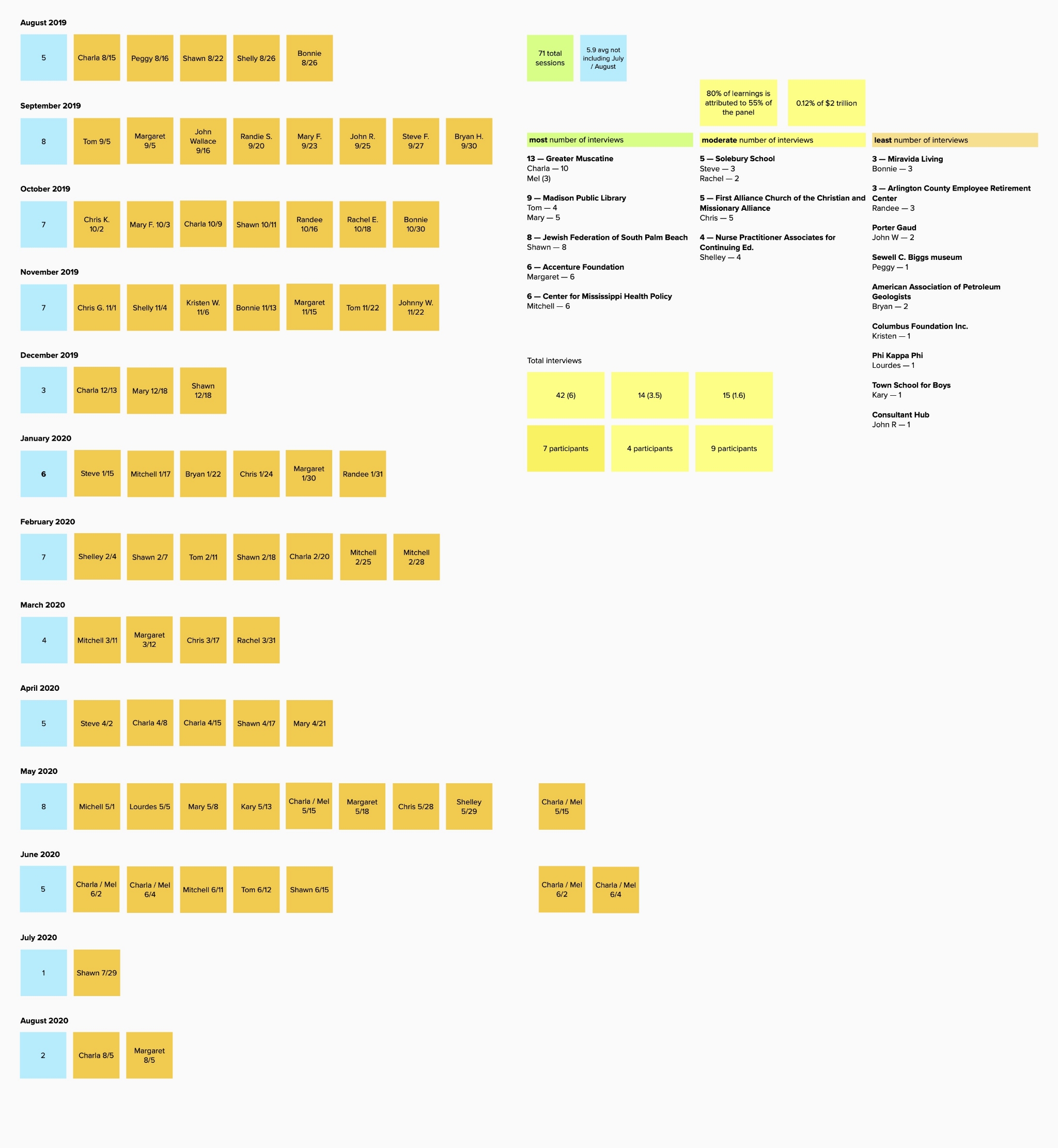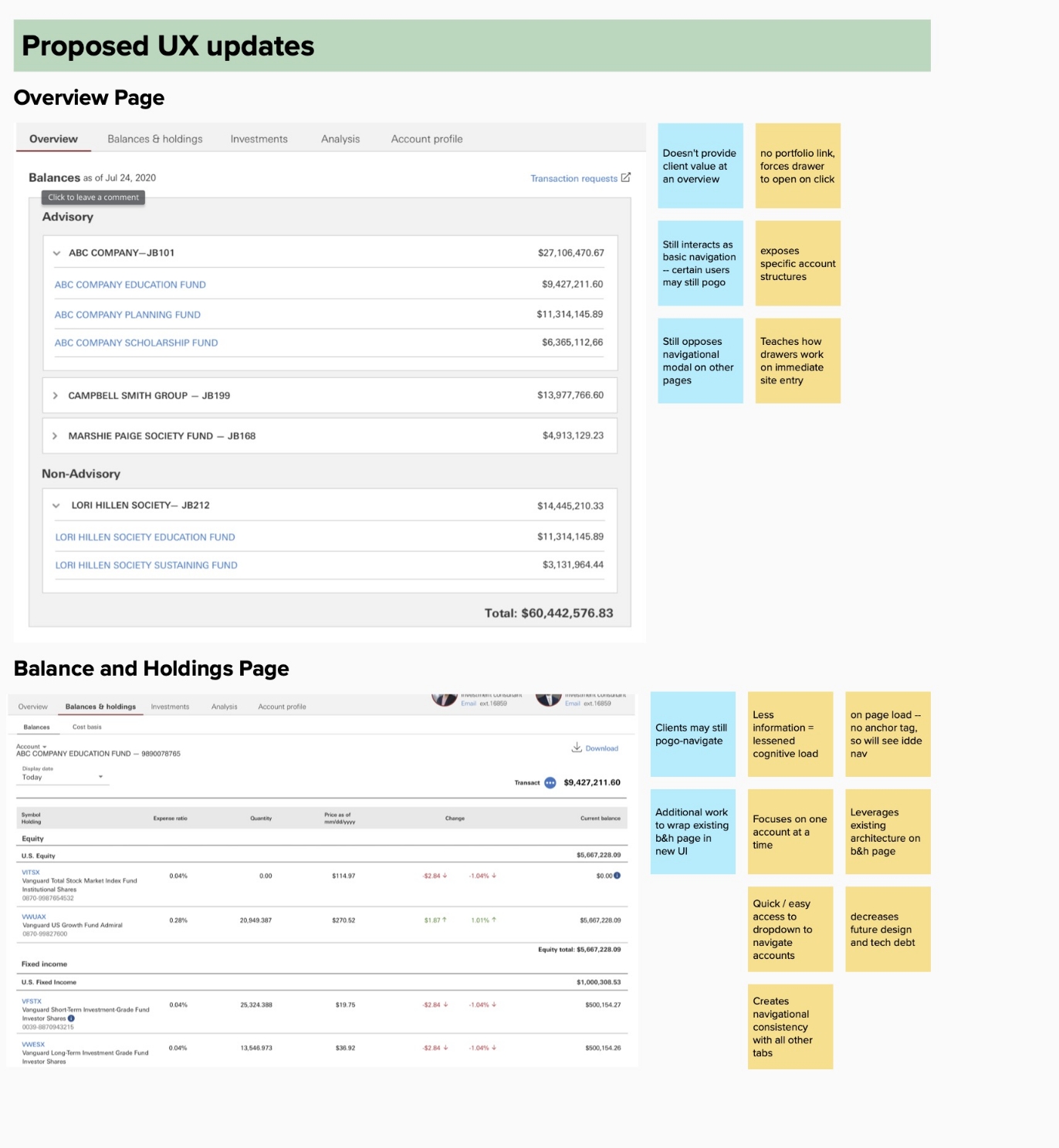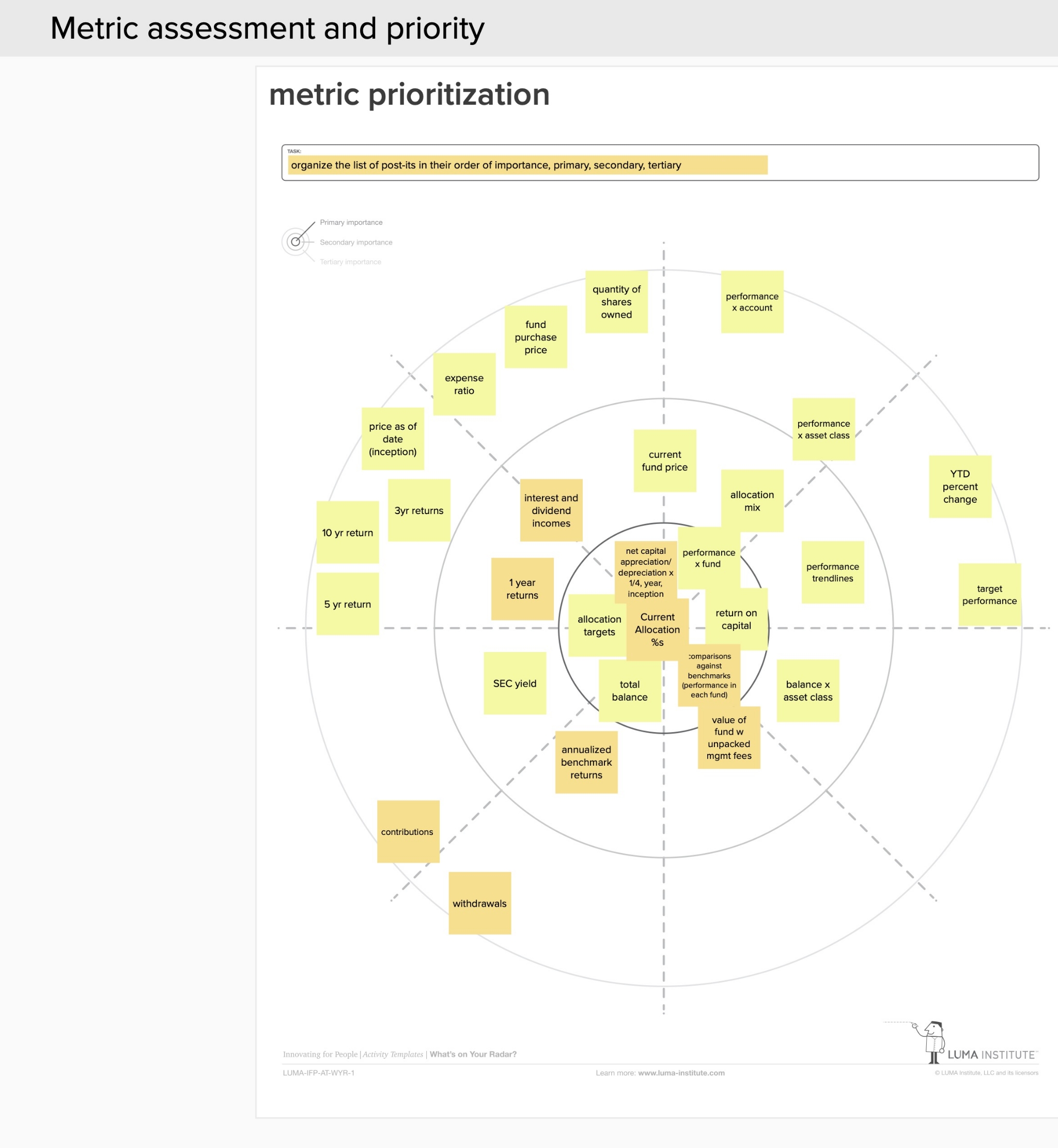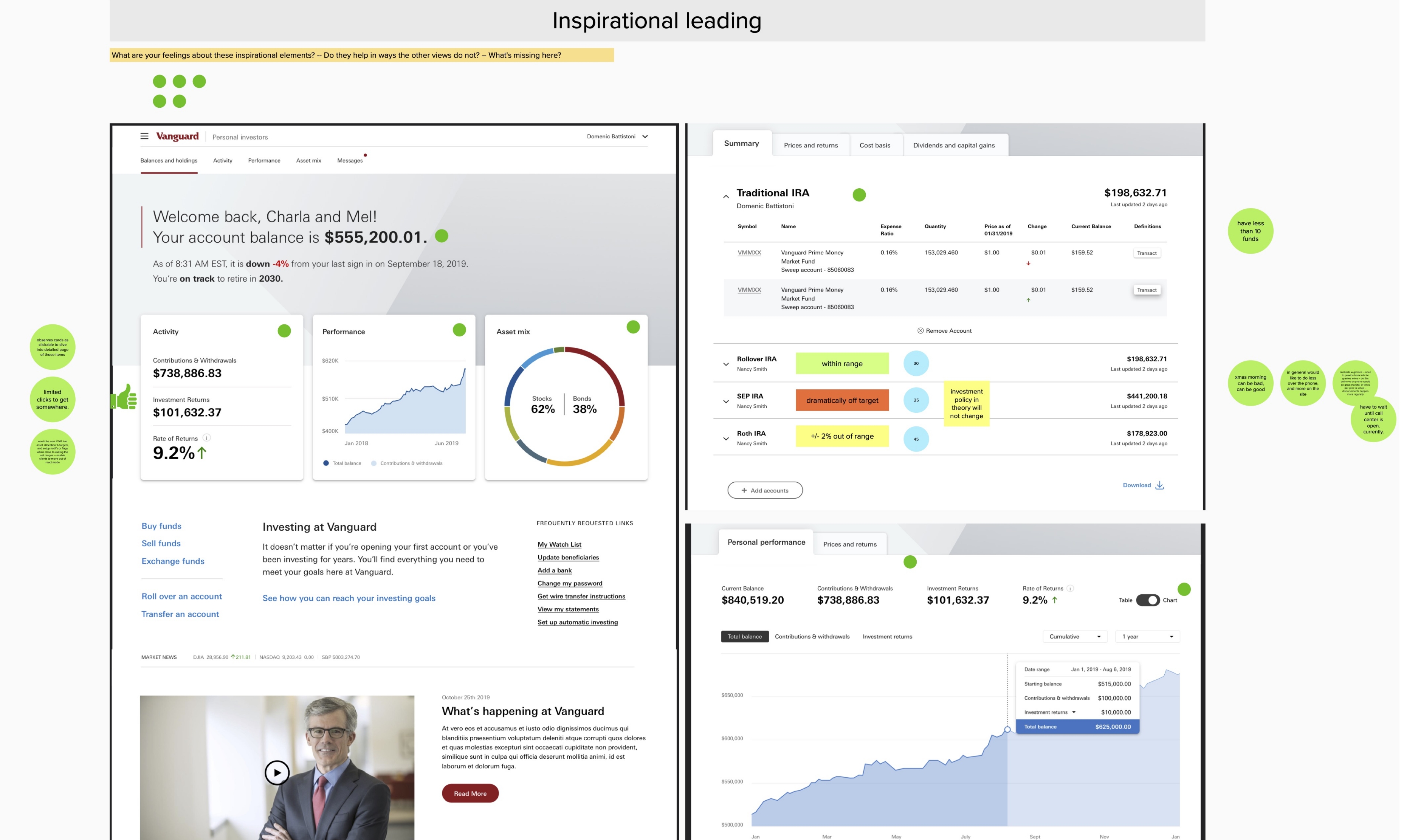Continuous discovery process
Overview
Conduct interviews, usability studies, and product assessments on a weekly basis to drive product decisions.
Team
User Experience Strategist, my role
Journey Owner, Liz Brudowski
Senior UX Researcher, Natalya Pogosova
Senior UX Designer, Rachel Hernandez
Background
The Sr UX Research and I put together a 20+ person client interview panel. With the Sr UX Designer we established a continuous research and design process.
My Role
As strategist, I lead the focus of inquiries and worked with the researcher and designer to define specific goals and structure of our sessions. I concluded all analysis, and created and required visualizations of the information.
Notes
Inquiries were typically facilitated within Mural, a collaborative space where client, researcher, and strategist could work together on a path of learning.
Conduct interviews, usability studies, and product assessments on a weekly basis to drive product decisions.
Team
User Experience Strategist, my role
Journey Owner, Liz Brudowski
Senior UX Researcher, Natalya Pogosova
Senior UX Designer, Rachel Hernandez
Background
The Sr UX Research and I put together a 20+ person client interview panel. With the Sr UX Designer we established a continuous research and design process.
My Role
As strategist, I lead the focus of inquiries and worked with the researcher and designer to define specific goals and structure of our sessions. I concluded all analysis, and created and required visualizations of the information.
Notes
Inquiries were typically facilitated within Mural, a collaborative space where client, researcher, and strategist could work together on a path of learning.

note: Audit and analysis of research inquiries conducted in a 13 month time-span
Establishing scope
Semantic zoom
Leveraging a semantic zoom diagram, I diagrammed all the product areas represented by the IDDE (Institutional digital direct client experience) team. This diagramming method afforded teammembers to see epic level product roadmaps and the respective stories within.
Diving into the levels
Focusing on each level -01 in the semantic map, we contextualized each user story into segments. For example, “Becoming informed, Making decisions, Transacting”.
Once appropriate groupings were outlined for each story, we were able to create a journey map. The journey map is the first step in understanding where along the customers path a particular story resides, and what the customers feelings are at that respective moment.
Leveraging a semantic zoom diagram, I diagrammed all the product areas represented by the IDDE (Institutional digital direct client experience) team. This diagramming method afforded teammembers to see epic level product roadmaps and the respective stories within.
Diving into the levels
Focusing on each level -01 in the semantic map, we contextualized each user story into segments. For example, “Becoming informed, Making decisions, Transacting”.
Once appropriate groupings were outlined for each story, we were able to create a journey map. The journey map is the first step in understanding where along the customers path a particular story resides, and what the customers feelings are at that respective moment.

Internal education, review and progress updates
Background
Even with agile product teams that drive their own roadmap and product decisions based on customer insights and business value, there are always times when we have to pitch our northstar visions to gain internal approval.
To the right is an example of a relaxed pitch presentation I put together and delivered to our leadership team in order to establish empathy with why we needed to re-design a recently launched product platform.
And below is an example of where we started to evolve this platform, and the research performed to inform it, after we gained immediate approval.
![]()
Even with agile product teams that drive their own roadmap and product decisions based on customer insights and business value, there are always times when we have to pitch our northstar visions to gain internal approval.
To the right is an example of a relaxed pitch presentation I put together and delivered to our leadership team in order to establish empathy with why we needed to re-design a recently launched product platform.
And below is an example of where we started to evolve this platform, and the research performed to inform it, after we gained immediate approval.




Pushing forward with client learnings
Inquiry session example
Set an agenda with the research participant to set expectations and assess concerns.
Learn their perspectives, goals, and desires for the respective work at hand – in this scenario we conducted a metric assessment and prioritization – to help focus our design efforts respective to the clients needs
Gather first look feedback on in-progress wireframes to see how our design projections meet or challenge the clients expectations. And leverage their feedback to make improvements or changes.
Set an agenda with the research participant to set expectations and assess concerns.
Learn their perspectives, goals, and desires for the respective work at hand – in this scenario we conducted a metric assessment and prioritization – to help focus our design efforts respective to the clients needs
Gather first look feedback on in-progress wireframes to see how our design projections meet or challenge the clients expectations. And leverage their feedback to make improvements or changes.

